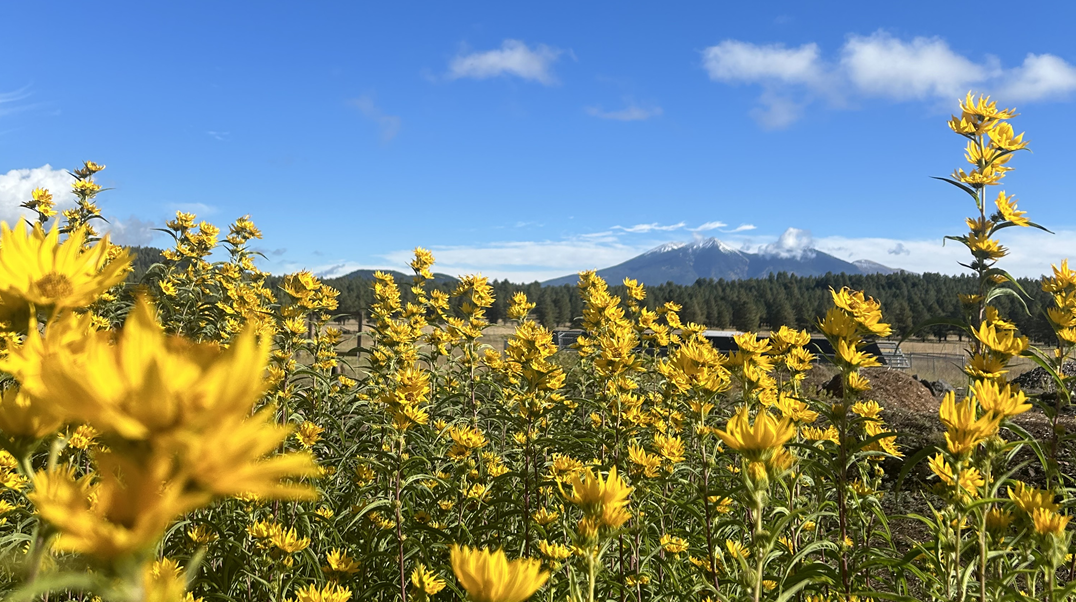I’m writing this the day after the fall equinox, the time of year when the day and night are equal lengths.
I remember how several days ago strong winds blew the crisp air to us and it is undeniably fall now. You would think that the growing season is over. However, there are several fall-blooming flowers that are bringing late season color to the Arboretum. And they are all yellow!
Maximilian sunflower, Helianthus maximiliani. While the summer sunflowers are fading, these fall sunflower are in full glory, even with the frosty mornings. Reaching heights of up to 10 ft tall (though 4-6 feet seems average here), each flower stalk contains numerous flowers. This plant is native to prairie soil, and prefers moist clay-like soil. However, being in the sunflower genus, it can grow in other soil types as well. This type of sunflower is a perennial.



Sulphur-flower buckwheat, Eriogonum umbellatum. I have never seen a flower with such a crisp, almost neon, yellow color. Most buckwheats grow low to the ground, and are hardly noticeable. But, when the Sulphur-flower buckwheat flowers, you suddenly notice them! After the flowers fade, the brown seed heads are quite charming as winter interest in the garden. All this being said, there is a lot of genetic variability within this plant species, which can make a botanist go crazy. But, since they are native to the Rocky Mountains and do well in cold, dry mountains this is a wonderful plant to try growing! They also have a long blooming season, from May/June to October.
Showy goldeneye, Heliomeris multiflora. When the monsoon season ends and it starts to dry out, these yellow flowers begin to bloom in mass! A multi-branched flowering perennial, they are native to the western mountains of the U.S. and live on dry to semi-moist slopes. When you plant them in your garden, make sure they have full sun. At the Arboretum, they seem to naturalize well.
Sarah Armanovs is the Gardens Manager at The Arboretum at Flagstaff.







